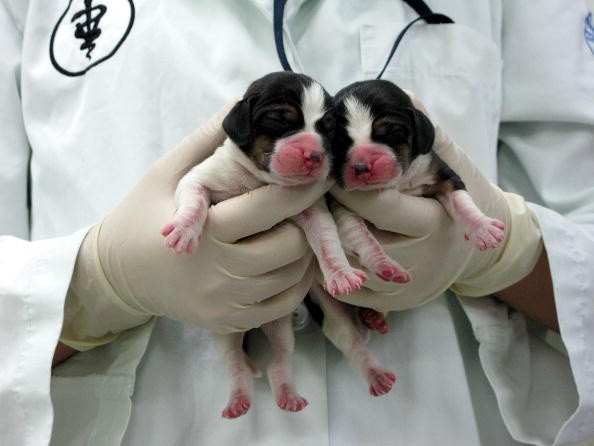According to National Geographic, Cloning is a process that allows scientists to create perfect genetic duplicates of live organisms.
Cloning may be done on genes, cells, organs, and even complete animals.
In nature, some clones already exist, then single-celled organisms like bacteria reproduce, they generate identical clones of themselves.
Identical twins are akin to clones in humans, they share nearly identical genes.
When a fertilized egg divides in two, identical twins are produced.
In the lab, scientists may also create clones.
They frequently clone genes in order to better understand and research them.
Researchers take DNA from a living species and place it into a carrier such as bacteria or yeast to clone a gene.
A new copy of the gene is created every time the carrier reproduces.
Elizabeth Ann, a tiny predator, was cloned to help diversify the species' small gene pool. The black-footed ferret was originally considered to be extinct, but after a rancher discovered a tiny colony in 1979, a breeding program was established to increase their numbers.
According to the US Fish and Wildlife Service, there are around 350 individuals surviving in the wild, all of whom are derived from just seven ferrets, as per ScienceFocus.

Cloning endangered animals
A healthy clone of the critically endangered Przewalski's horse was born in Texas in August 2020.
Przewalski's horses are the only true 'wild' horse species, endemic to Central Asia's steppes. Around 2,000 people survive, but they're all descended from only 12 wild-caught individuals, so they lack vital genetic variation.
Kurt, the small foal, was cloned from 40-year-old frozen cells from a stallion whose genes aren't widely distributed in today's population.
Kurt is genetically similar to the stallion, so when he grows up and breeds, the hope is that his progeny will restore the lost genetic variety.
Cloning animals extinct from the past
There will be no Jurassic Park in real life. Sorry. Dinosaurs aren't allowed since their DNA has been lost for too long.
However, more recently extinct creatures, such as the woolly mammoth, may be resurrected. All that is required is a supply of DNA (from a frozen cadaver or a museum specimen, for example) and a closely similar live species to assist nurture the cloned embryo.
This would entail implanting a clone of the woolly mammoth into the womb of a surrogate Asian elephant.
The issue is that Asian elephants are critically endangered. It's a key bone of contention among skeptics, who also question the efficacy of 'de-extinction' of species whose native habitats vanished decades ago.
Read more: Rise of Animal Cloning in 2021: Benefits, Risks, and Why It Matters
Also, you can clone your pets
There are at least three pet-cloning firms presently, and they can build a genetic clone of your favorite pet dog or cat for upwards of $40,000 (just over £30,000).
Barbra Streisand and Diane von Furstenburg, for example, have both purchased clones of their beloved dogs, although the practice raises ethical questions.
A heartbroken pet owner finds peace as a guardian 'pooch angel' beams her doe-eyed ghost dog back to Earth in fresh puppy form in one cloning advertisement from the Chinese business Sinogene.
Even if it's a well-staged tearjerker, cloning can't guarantee faithful lookalikes, much alone animals with similar personalities.
Clones can be used in a variety of ways by researchers.
A cloned embryo may be transformed into a stem cell factory.
Stem cells are a type of cell that may develop into a variety of different cells and organs.
They can be converted into nerve cells to repair a damaged spinal cord or insulin-producing cells to cure diabetes.
Animal cloning has been utilized for a number of diverse purposes.
Scientists have cloned mice with gene mutations to aid in the research of illnesses that emerge in the animals.
Cows and pigs have been cloned in order to generate more milk or meat.
Related article: 5 Most Famous Cloned Animals in History
© 2025 NatureWorldNews.com All rights reserved. Do not reproduce without permission.





